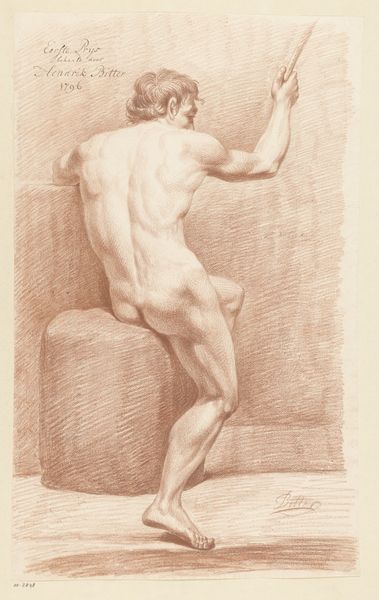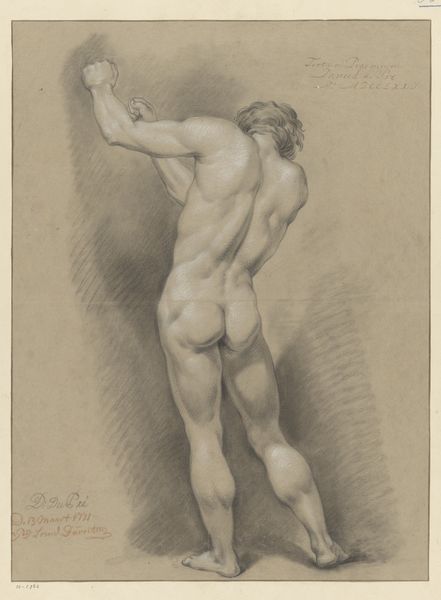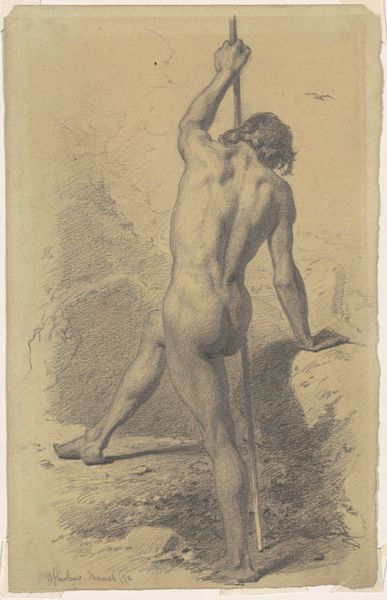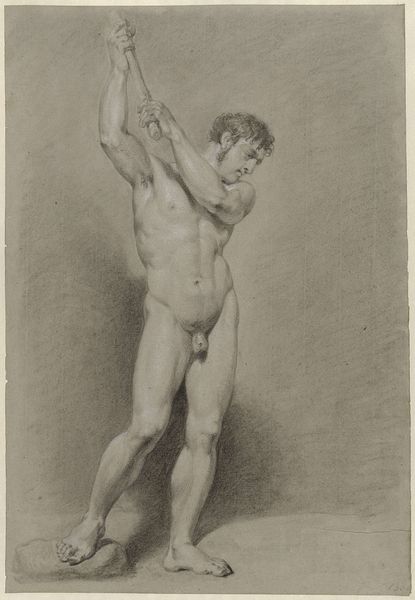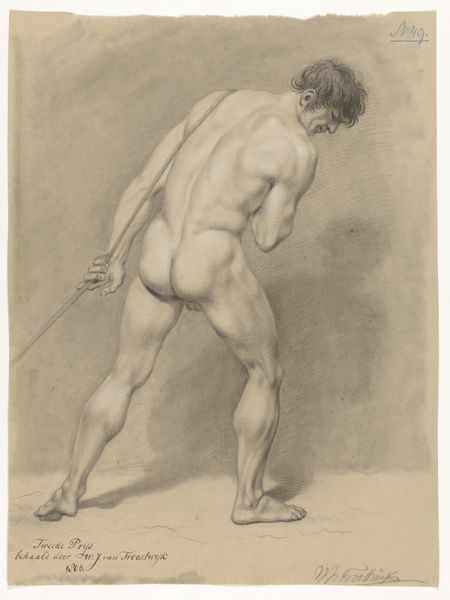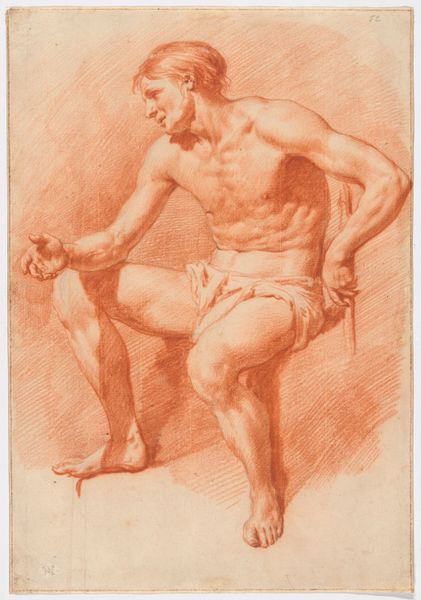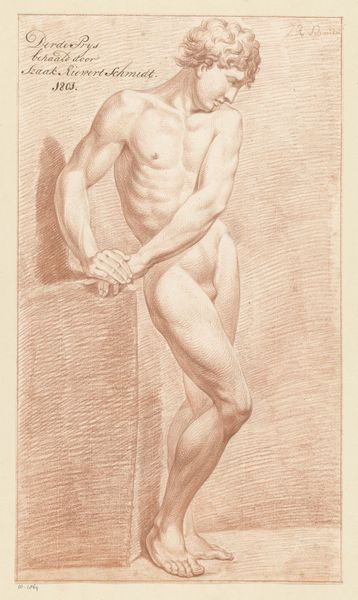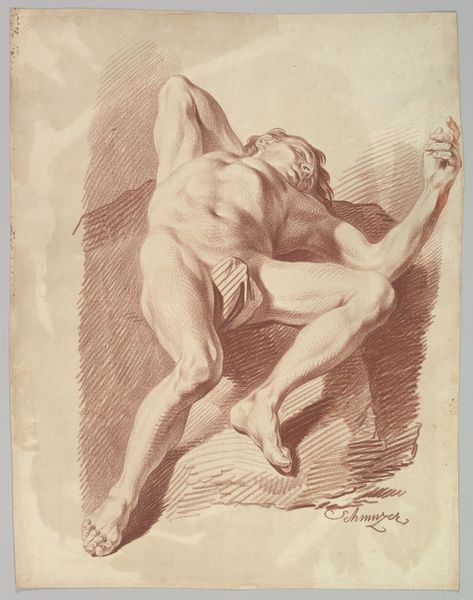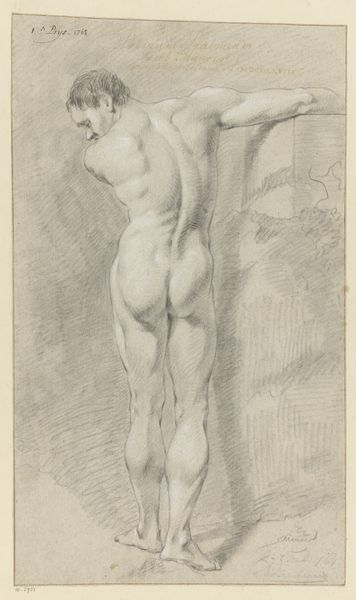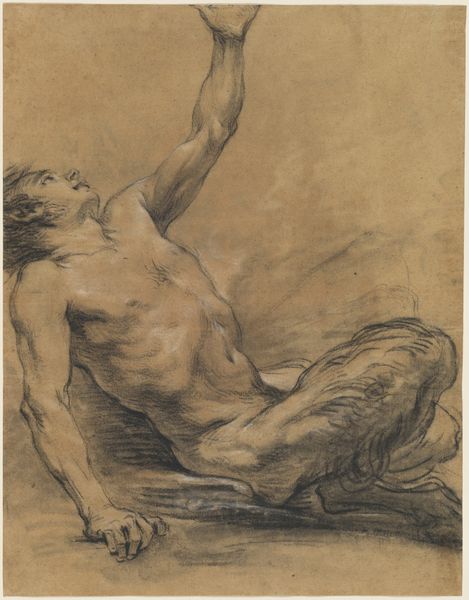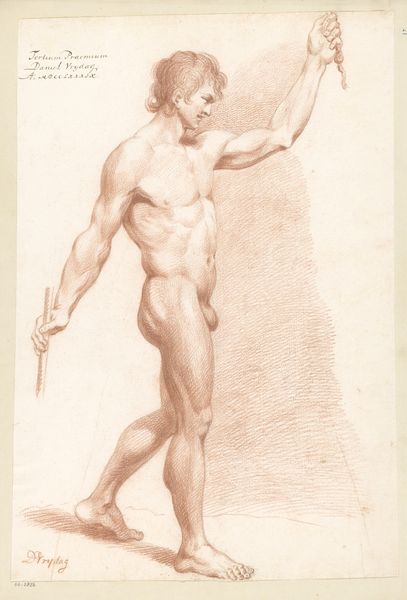
drawing, ink
#
drawing
#
baroque
#
pencil sketch
#
charcoal drawing
#
figuration
#
portrait reference
#
ink
#
pencil drawing
#
facial study
#
academic-art
#
nude
Dimensions: sheet: 56.6 x 38.4 cm (22 5/16 x 15 1/8 in.)
Copyright: National Gallery of Art: CC0 1.0
Curator: Before us is “A Male Nude Seen from Behind,” a drawing made around 1760 by an anonymous artist. It’s rendered in a reddish-brown chalk or ink, presenting a powerful, classically posed male figure. Editor: My first impression is one of intense physical strain, a certain Baroque drama achieved through that tension and torque in the body. It makes me wonder, what is he holding onto? Curator: Indeed, it captures a moment of exerted force. Think about the process. This academic drawing was most likely made in a studio. A male model assuming an idealized athletic pose while students reproduced this exercise in observation and technical control in red chalk or a similar medium, probably for later engravings or prints, allowing for easy reproductions, and wider sales. Editor: The figure grasping a rope above his head, arching back… It reminds me of classical depictions of Hercules and other mythological figures of strength and virility. Perhaps that is no coincidence? Was it meant to imbue him with similar symbolic weight? Curator: Absolutely, though, the artist here, while emulating a heroic prototype, seems less focused on the final representation of power, and more concerned with capturing the corporeal effects of that exertion on his back and arms. This almost certainly comes out of workshop practice; learning from the great sculptors of antiquity via drawn copies was key to solidifying good taste and acquiring marketable studio know-how. Editor: Interesting…The anonymity shrouding this work makes one consider a universality; almost as if the intention were to reduce and synthesize, rather than distinguish one single individual. The medium, readily accessible and relatively inexpensive like red chalk, also removes any overt pretensions or excessive pomp. It seems more aimed at pure skill than luxury or even personal expression. Curator: Exactly. The drawing itself is an exercise—perhaps literally—and serves as a testament to artistic discipline. And in turn, reproductions would function as more than just mementos or records. Consider these circulated engravings functioning like blueprints in far-flung artisanal communities as designs reproduced across different media in objects from furniture to textiles to smaller sculptures. Editor: So it isn’t merely the image, but the entire infrastructure of its creation and circulation, including workshops, pedagogical routines, readily available materials, the system for production... All revealing something profound. Thank you, this image certainly has more layers to consider now.
Comments
No comments
Be the first to comment and join the conversation on the ultimate creative platform.
